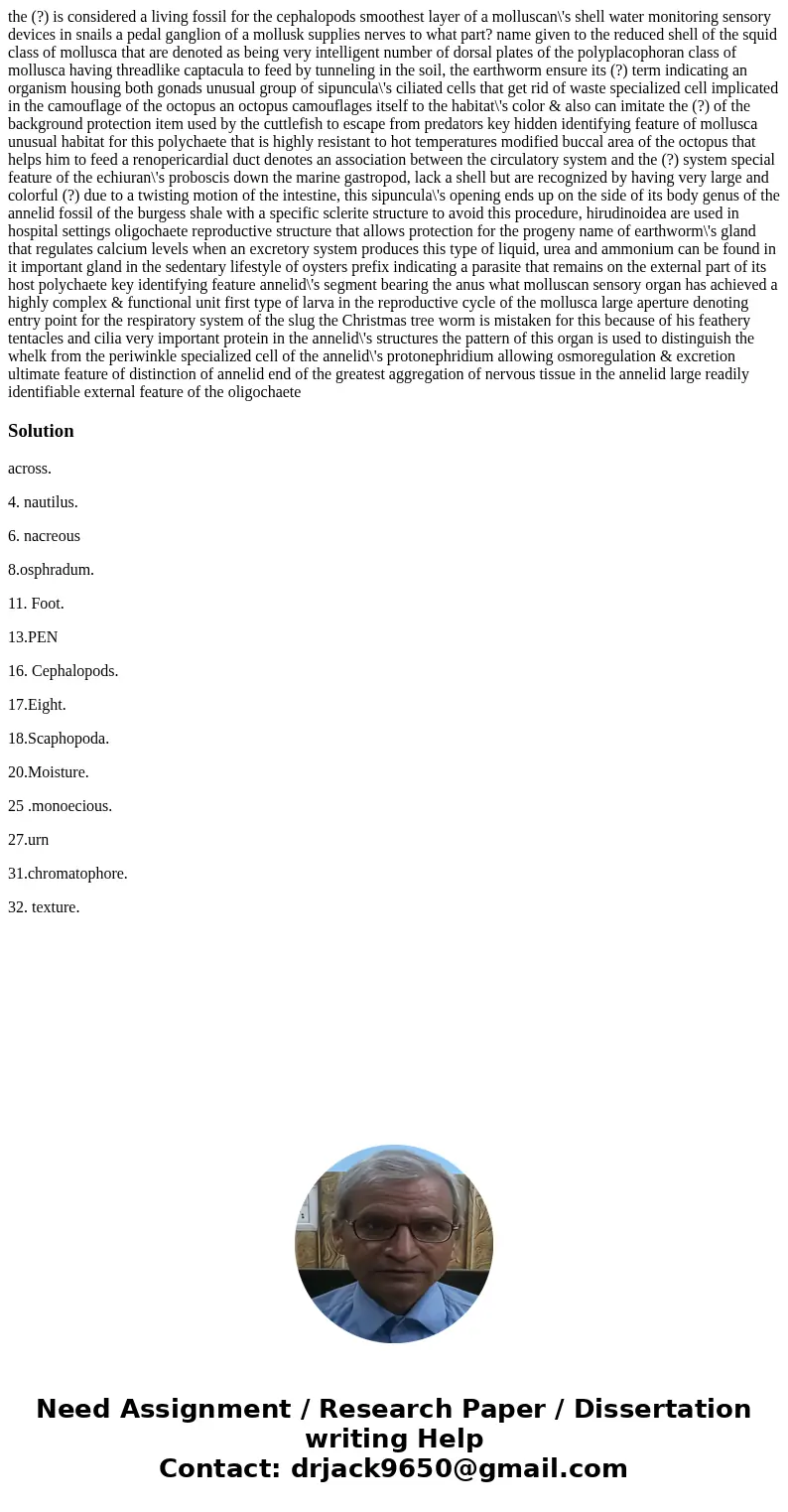the is considered a living fossil for the cephalopods smoot
the (?) is considered a living fossil for the cephalopods smoothest layer of a molluscan\'s shell water monitoring sensory devices in snails a pedal ganglion of a mollusk supplies nerves to what part? name given to the reduced shell of the squid class of mollusca that are denoted as being very intelligent number of dorsal plates of the polyplacophoran class of mollusca having threadlike captacula to feed by tunneling in the soil, the earthworm ensure its (?) term indicating an organism housing both gonads unusual group of sipuncula\'s ciliated cells that get rid of waste specialized cell implicated in the camouflage of the octopus an octopus camouflages itself to the habitat\'s color & also can imitate the (?) of the background protection item used by the cuttlefish to escape from predators key hidden identifying feature of mollusca unusual habitat for this polychaete that is highly resistant to hot temperatures modified buccal area of the octopus that helps him to feed a renopericardial duct denotes an association between the circulatory system and the (?) system special feature of the echiuran\'s proboscis down the marine gastropod, lack a shell but are recognized by having very large and colorful (?) due to a twisting motion of the intestine, this sipuncula\'s opening ends up on the side of its body genus of the annelid fossil of the burgess shale with a specific sclerite structure to avoid this procedure, hirudinoidea are used in hospital settings oligochaete reproductive structure that allows protection for the progeny name of earthworm\'s gland that regulates calcium levels when an excretory system produces this type of liquid, urea and ammonium can be found in it important gland in the sedentary lifestyle of oysters prefix indicating a parasite that remains on the external part of its host polychaete key identifying feature annelid\'s segment bearing the anus what molluscan sensory organ has achieved a highly complex & functional unit first type of larva in the reproductive cycle of the mollusca large aperture denoting entry point for the respiratory system of the slug the Christmas tree worm is mistaken for this because of his feathery tentacles and cilia very important protein in the annelid\'s structures the pattern of this organ is used to distinguish the whelk from the periwinkle specialized cell of the annelid\'s protonephridium allowing osmoregulation & excretion ultimate feature of distinction of annelid end of the greatest aggregation of nervous tissue in the annelid large readily identifiable external feature of the oligochaete
Solution
across.
4. nautilus.
6. nacreous
8.osphradum.
11. Foot.
13.PEN
16. Cephalopods.
17.Eight.
18.Scaphopoda.
20.Moisture.
25 .monoecious.
27.urn
31.chromatophore.
32. texture.

 Homework Sourse
Homework Sourse